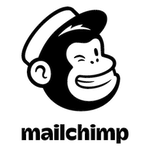“The goal is to create a delightful experience. It’s to create a first impression that is so personalized, so useful that you’re delivering value in that first touch, or that first couple of touches. That’s super important.” – Guillaume Cabane, Growth Advisor

As an early entrant to the email marketing market, Mailchimp had managed to build a strong brand, generate a lot of awareness, and acquire more than 85,000 users and customers.
But to increase their footprint in the market still further, in 2009 Mailchimp decided to add a free tier to their product. Within a year of ‘going Freemium’, their user base had jumped to 450,000 users.
Marketing agencies managing newsletters for Fortune 500 companies with millions of subscribers were signing up, hardware store owners who had recently discovered email marketing were signing up, and a wide range of prospects falling between were also signing up.
How to Segment Product-Led Onboarding (PLO)
To better address the needs of its user base, Mailchimp decided to work on segmentation. There were hundreds of user profiles. They couldn’t simply ask: “Are you a hardware store or a marketing agency?”
Instead, they decided to first ask users if they had a subscription list. If they did, they would ask how many people were in it.
Based on these two data points, they were able to determine the appropriate next steps. One segment might get emails about a WordPress plugin to help set up a sign-up form on a blog, while another might receive advanced segmentation tips.
Onboarding expert Samuel Hulick, who did consulting work for Mailchimp says: “Even just asking a little insightful question like that can give you a relatively good idea of what the outcomes that the sign-up is looking for are, and then, as much as you can, personalize the ensuing experience around those outcomes.”
Segmenting Freemium
A lot of information can be inferred from the data points at your disposal, including where users signed up, the time of the day, the time of the year, which landing pages they came from, and which posts they read. You don’t need to ask explicit questions to segment users. You can often get valuable segmentation data in more indirect ways.
As Just Enough Research author Erika Hall says: “Often asking a question directly is the worst way to get a true and useful answer to that question.”
Over the years, Mailchimp’s functionalities and marketing have changed significantly. As a result, their segmentation has also changed. They’re able to make increasingly precise recommendations and grow revenue per user by helping each of their customers maximize their use of the product.
Like Mailchimp, you can use your onboarding process to ask questions (e.g. What expectations did you have for our product? How can we help?) and experiment with segmentation.
You will get people who are new to your product all the time. They will all have their own unique perspectives and expectations. Product-led onboarding is the perfect place to test different messaging and value drivers.
– –
This post in an excerpt from Solving Product. If you enjoyed the content, you'll love the new book. You can download the first 3 chapters here →.